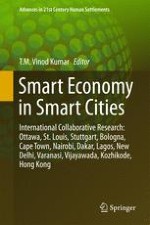2017 | OriginalPaper | Buchkapitel
31. Smart Infrastructure Development Makes Smart Cities—Promoting Smart Transport and ICT in Dakar
Aktivieren Sie unsere intelligente Suche, um passende Fachinhalte oder Patente zu finden.
Wählen Sie Textabschnitte aus um mit Künstlicher Intelligenz passenden Patente zu finden. powered by
Markieren Sie Textabschnitte, um KI-gestützt weitere passende Inhalte zu finden. powered by
